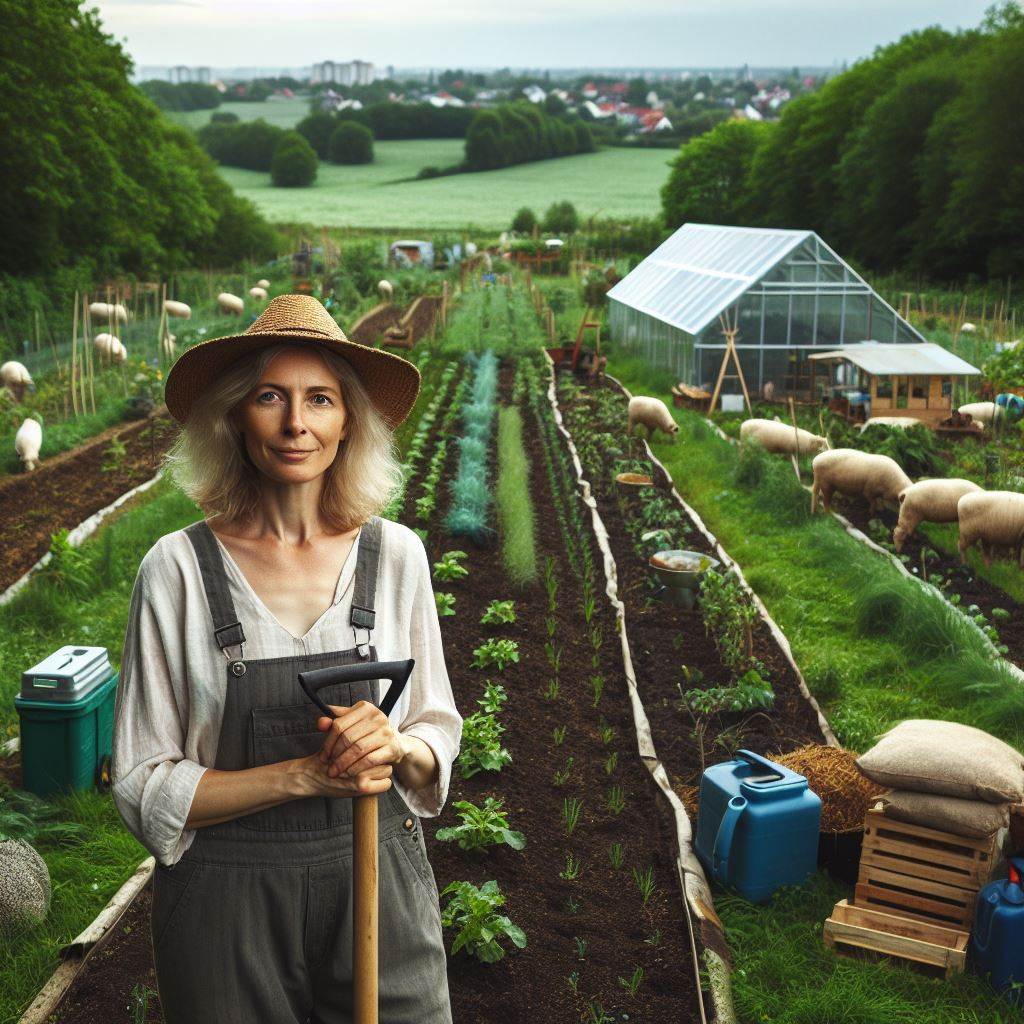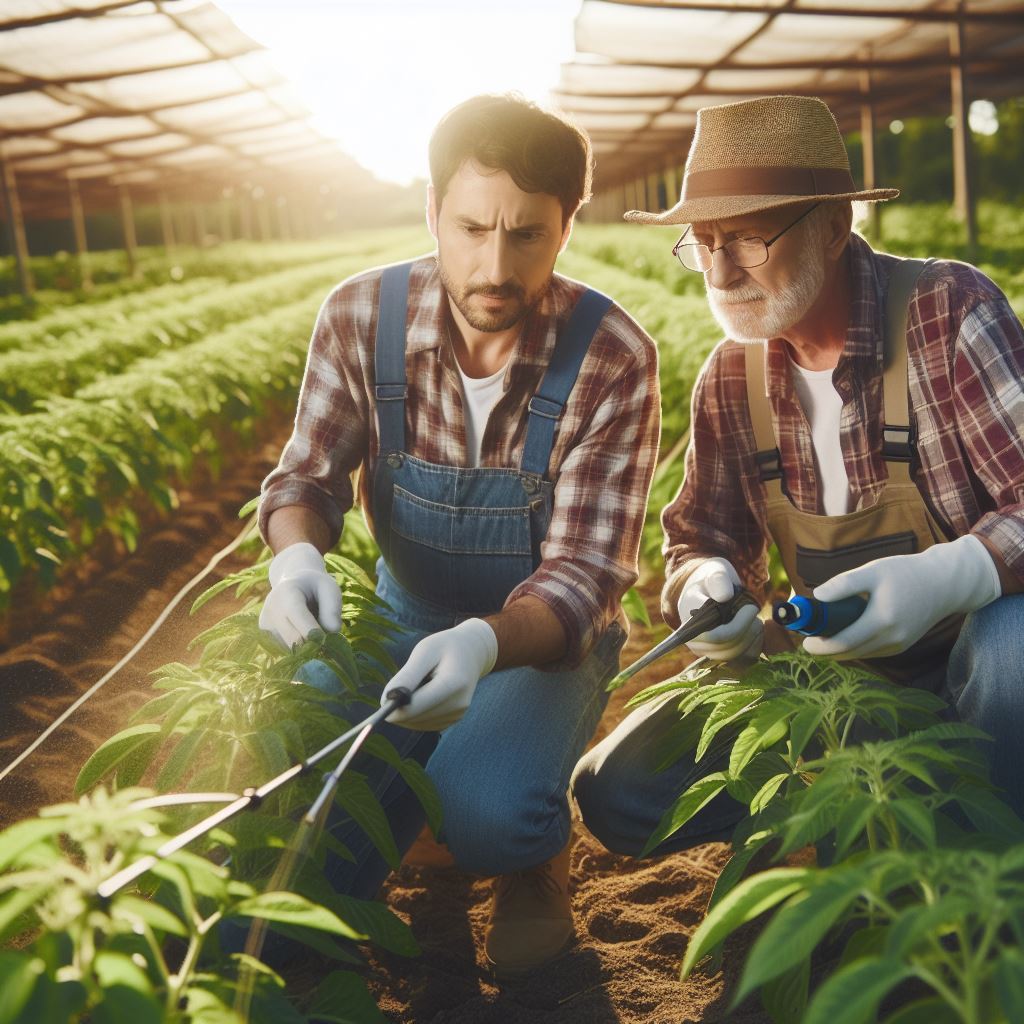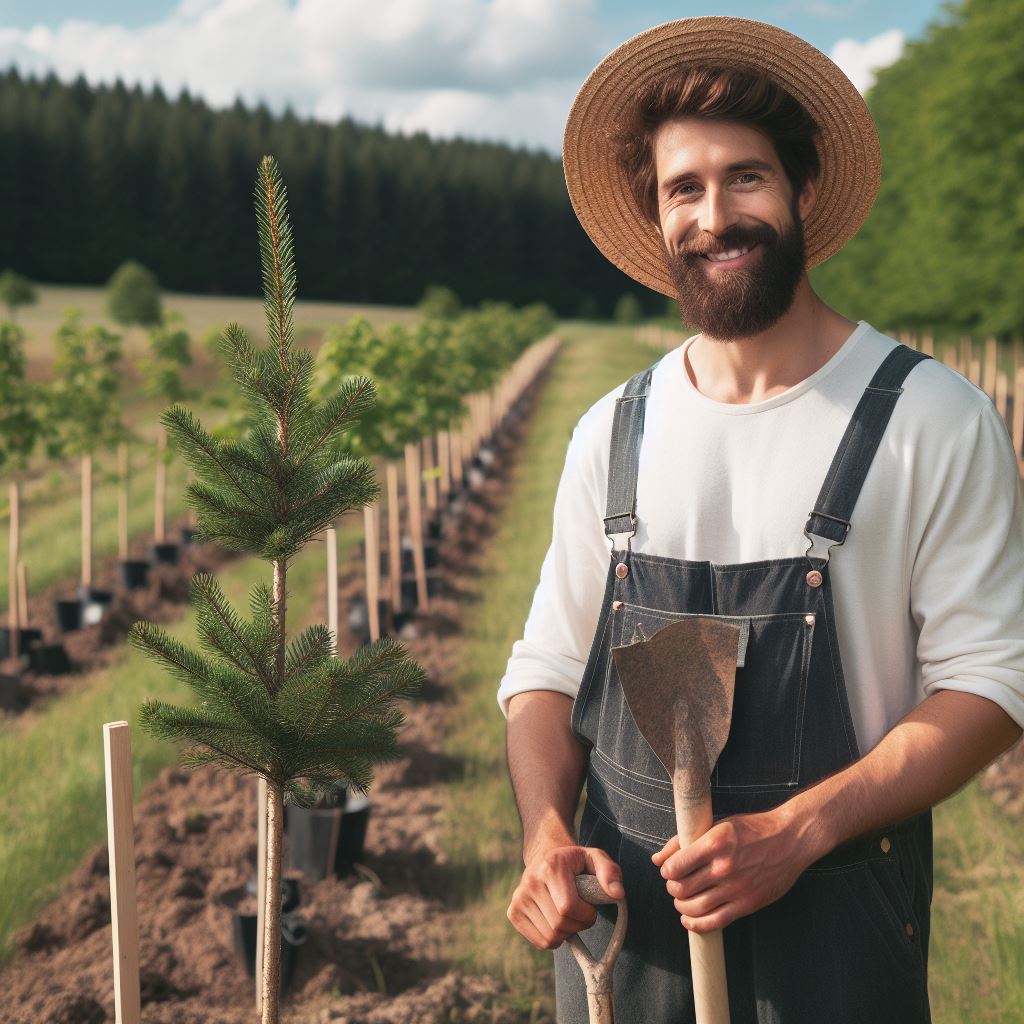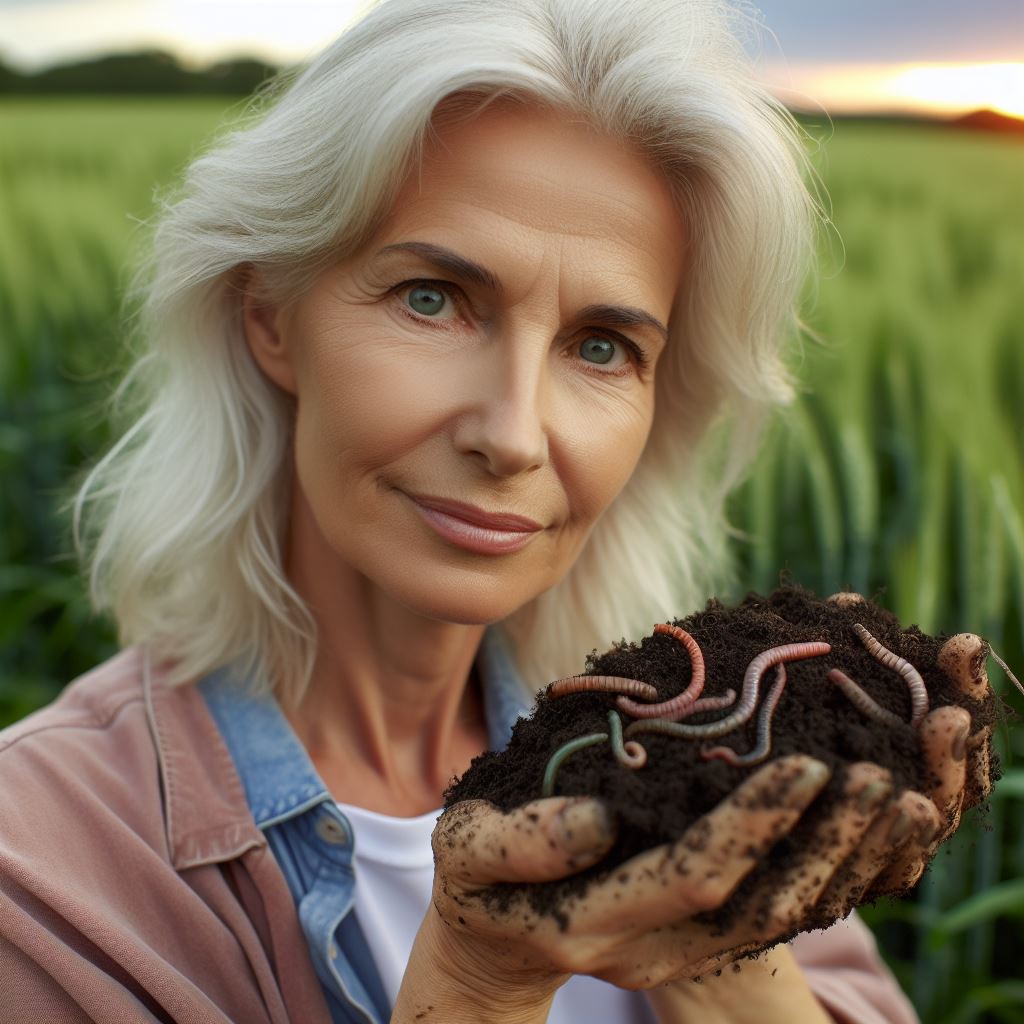Introduction
Composting is the process of decomposing organic materials to create nutrient-rich soil amendments.
Healthy soil is vital for farmers as it promotes plant growth, improves water retention, and reduces the need for chemical fertilizers.
In this blog post, we will discuss various composting techniques that can help enhance soil health and provide sustainable solutions for farmers.
Composting is the natural process of breaking down organic waste into a nutrient-rich soil amendment.
Healthy soil is essential for farmers as it enhances crop growth, increases nutrient availability, and improves water retention capacity.
In this blog post, we will explore different composting techniques such as hot composting, cold composting, and vermicomposting.
We will discuss the benefits and considerations of each method along with practical tips for successful implementation.
Additionally, we will highlight the importance of balancing organic materials, monitoring moisture levels, and providing adequate aeration during the composting process.
By following these techniques, farmers can improve soil fertility, reduce waste, and contribute to sustainable agricultural practices.
By implementing appropriate composting techniques, farmers can transform organic waste into valuable resources, and by enhancing soil health, they can foster a sustainable and productive farming ecosystem.
So, let’s delve into the world of composting and discover the secrets to healthier soil!
Benefits of Composting
A well-maintained composting system offers several benefits that can greatly enhance the health and quality of your soil.
A. Improves soil structure
Composting helps improve the structure of soil by increasing its ability to hold and drain water properly.
- The organic matter in compost improves soil aggregation, which creates larger pore spaces for better drainage.
- Improved soil structure allows plant roots to penetrate easily, promoting better nutrient absorption.
B. Increases nutrient content
Through composting, you can significantly increase the nutrient content of your soil.
- Compost is rich in essential macronutrients such as nitrogen, phosphorus, and potassium, promoting healthy plant growth.
- The gradual release of nutrients from compost provides a steady supply for plants, reducing the need for chemical fertilizers.
C. Enhances water retention
Composting helps improve the water-holding capacity of soil, ensuring plants have adequate moisture.
Transform Your Agribusiness
Unlock your farm's potential with expert advice tailored to your needs. Get actionable steps that drive real results.
Get Started- Organic matter in compost absorbs and retains water, reducing water runoff and preventing soil from becoming too dry.
- Enhanced water retention helps plants withstand drought conditions and minimizes the need for frequent watering.
D. Reduces soil erosion
By incorporating compost into your soil, you can help prevent soil erosion caused by wind and water.
- Compost acts as a protective layer, reducing the impact of raindrops and slowing down water runoff.
- The improved soil structure resulting from composting prevents the loss of topsoil, which is vital for plant growth.
In short, composting not only helps create healthier soil, but it also offers a range of benefits for gardeners and farmers alike.
By improving soil structure, increasing nutrient content, enhancing water retention, and reducing soil erosion, composting is an essential practice for sustainable and thriving gardens.
Read: Water Conservation in Permaculture Design
Types of Composting Techniques
Composting is a natural process that transforms organic waste into nutrient-rich soil amendments.
It is an environmentally friendly practice that reduces waste going into landfills and benefits plant growth.
There are several composting techniques available, each with its own advantages.
In this section, we will explore three common types of composting techniques: basic/traditional composting, vermicomposting, and bokashi composting.
A. Basic/Traditional Composting
Basic or traditional composting is one of the oldest and simplest methods of composting.
It involves layering organic materials, such as kitchen scraps, yard waste, and dry leaves, to create a compost pile.
The pile should be turned regularly to ensure proper decomposition and aeration.
Monitoring temperature and moisture levels is crucial to maintain an optimal environment for microbial activity.
B. Vermicomposting
Vermicomposting utilizes worms, specifically red worms or earthworms, to break down organic materials.
To start vermicomposting, you need a worm bin, which can be as simple as a container with drainage holes.
Add bedding materials like shredded newspaper or cardboard to create a comfortable habitat for the worms.
Feed the worms regularly with kitchen scraps, avoiding meat, dairy, and oily foods.
Maintaining the worm bin’s moisture and temperature is essential for the worms’ well-being and the effectiveness of vermicomposting.
C. Bokashi Composting
Bokashi composting is a unique fermentation process that involves the use of bokashi mix, a combination of microorganisms, bran, and water.
This method allows for the breakdown of organic waste in an anaerobic (without oxygen) environment.
To create bokashi mix, collect organic waste, such as fruit and vegetable scraps, and mix it with the inoculant provided.
Seal the mixture in an airtight container for fermentation to occur. The fermented bokashi mix can be added to a compost pile or buried in soil to accelerate decomposition.
Each composting technique has its strengths. Basic/traditional composting is suitable for large volumes of organic materials and can be done in backyard compost bins.
Vermicomposting is ideal for those with limited space and a desire for high-quality worm castings.
Bokashi composting offers an efficient way to compost food waste, including meat and dairy, without the risk of attracting pests or producing odors.
Showcase Your Farming Business
Publish your professional farming services profile on our blog for a one-time fee of $200 and reach a dedicated audience of farmers and agribusiness owners.
Publish Your ProfileIn fact, there are various composting techniques available, catering to different situations and preferences.
Basic/traditional composting, vermicomposting, and bokashi composting all contribute to healthier soil, reduced waste, and sustainable gardening practices.
Experiment with these techniques to find the one that suits your needs best and start turning your organic waste into valuable soil amendments today.
Read: Eco-Farming: Sustainable Practices Overview
Tips for Successful Composting
A. Choosing the Right Location
- Pick a sunny spot for faster decomposition.
- Ensure proximity to a water source.
- Avoid windy areas to prevent loss of moisture.
B. Using a Variety of Organic Materials
- Mix kitchen scraps like fruit peels.
- Add yard waste such as leaves and grass.
- Include shredded newspaper or cardboard for balance.
C. Balancing Green and Brown Materials
- Maintain a 2:1 ratio of green to brown.
- Greens (nitrogen-rich) include kitchen waste.
- Browns (carbon-rich) comprise dry leaves and paper.
D. Maintaining Ideal Moisture and Temperature Levels
- Keep the compost moist but not waterlogged.
- Aim for temperatures between 110°F and 160°F.
- Use a compost thermometer for accuracy.
E. Proper Turning and Aerating Techniques
- Turn the compost every 2-3 weeks.
- Aerate by poking holes with a pitchfork.
- Enhances oxygen flow, expediting decomposition.
F. Troubleshooting Common Composting Issues
- Foul Odor:
- Adjust the green to brown ratio.
- Ensure proper aeration.
- Adjust the green to brown ratio.
- Pest Infestation:
- Avoid adding meat or dairy products.
- Introduce natural predators like nematodes.
- Avoid adding meat or dairy products.
- Slow Decomposition:
- Check moisture levels; adjust if needed.
- Ensure the right carbon-nitrogen balance.
- Check moisture levels; adjust if needed.
- Overly Wet Compost:
- Add more brown materials for balance.
- Increase aeration to promote drying.
- Add more brown materials for balance.
- Insufficient Aeration:
- Turn the compost more frequently.
- Use a compost aerator for deeper penetration.
- Turn the compost more frequently.
- Unpleasant Texture:
- Shred larger materials for uniformity.
- Ensure a good mix of particle sizes.
- Shred larger materials for uniformity.
To summarize, successful composting hinges on a strategic approach.
Choose an optimal location, mix diverse organic materials, maintain the right balance, monitor moisture and temperature, turn and aerate effectively, and troubleshoot problems promptly.
Following these guidelines will yield nutrient-rich compost, fostering healthier soil for your plants.
Read: Permaculture 101: Key Principles Explained

Composting Tools and Equipment
A. Compost bins and tumblers
Compost bins and tumblers are essential tools for successfully composting organic waste at home.
These specially designed containers provide a controlled environment for the composting process.
Compost bins are typically made of durable materials like plastic, wood, or metal and come in various sizes.
Tumblers, on the other hand, are rotating containers that make it easier to turn and aerate the compost.
Both options help promote decomposition and prevent pests from accessing the organic material.
B. Pitchforks and compost turners
Pitchforks and compost turners are tools used to mix and turn the compost materials.
They are essential for aerating the compost pile, ensuring proper airflow and decomposition.
Pitchforks, with their long handles and sturdy tines, are perfect for lifting and moving larger quantities of compost.
Compost turners, designed specifically for this purpose, make the task easier by efficiently mixing the organic matter.
C. Thermometers for monitoring temperature
Temperature plays a crucial role in composting, influencing microbial activity and decomposition rates.
Using a compost thermometer allows you to monitor the temperature inside the compost pile.
Ideally, the internal temperature should reach between 135°F and 160°F (57°C and 71°C) to ensure efficient composting.
A thermometer with a long probe is best for accurately measuring the temperature at various depths.
D. Moisture meters
Maintaining a proper balance of moisture in the compost pile is crucial for its success.
Moisture meters help you monitor the moisture level, ensuring it stays within the optimal range.
Too much moisture can lead to a slimy, anaerobic environment, while too little can impede the decomposition process.
A moisture meter allows you to adjust the water content accordingly, promoting healthy decomposition.
E. Worm bins for vermicomposting
Worm bins, also known as vermicomposting bins, are used for a specific method of composting involving worms.
These bins provide the perfect habitat for worms to thrive and transform organic waste into nutrient-rich worm castings.
Worm bins are typically made of plastic or wood and come with stacked trays to accommodate the worms and their composting process.
Using worm bins is an excellent way to enhance compost quality and speed up the decomposition process.
In brief, having the right tools and equipment is vital to successful composting.
Compost bins, tumblers, pitchforks, compost turners, thermometers, moisture meters, and worm bins all serve specific purposes.
Take the time to choose the appropriate tools for your composting needs, and you’ll be well on your way to healthier soil.
Read: Wind Farms in Agriculture: A Guide
Composting Safety Measures
Achieving healthier soil through composting requires implementing proper safety measures to ensure the process is efficient and harmless.
The following are important considerations:
A. Handling and Storing Organic Waste Properly
- Collect organic waste in a designated container, such as a compost bin or compost pile.
- Place the container in a well-ventilated area away from direct sunlight and water sources.
- Regularly turn and mix the organic waste to enhance decomposition and prevent odor issues.
- Ensure the container is secure to avoid attracting pests and rodents.
B. Avoiding Composting Prohibited Materials
- Avoid composting materials such as meat, dairy products, oils, and fats, as they attract pests.
- Do not include highly invasive weeds, plants treated with pesticides, or diseased plants.
- Avoid composting large quantities of grass clippings, as they can create an imbalanced compost pile.
- Use caution when adding pet waste, as it may contain harmful bacteria or parasites.
C. Protecting Oneself from Pathogens and Pests
- Wear gloves, long-sleeved shirts, and pants while handling organic waste to protect against potential pathogens.
- Use a mask or scarf to cover your nose and mouth to avoid inhaling dust or fungal spores.
- Inspect the composting area regularly for signs of pests such as rodents or insects and take appropriate measures to control them.
- If working with large compost piles, wear sturdy boots to prevent injuries from sharp objects.
D. Proper Disposal of Finished Compost
- Allow the compost to fully mature and decompose before using it in the garden.
- Screen or sift the finished compost to remove any remaining large particles or debris.
- Apply the compost to your garden beds, flower pots, or lawns for optimal soil enhancement.
- Store any excess compost in a covered container or bag for future use, maintaining its quality.
By following these safety measures, you can ensure a successful composting process without compromising your health or the environment.
Remember, composting is a sustainable practice that not only improves soil health but also reduces waste and helps to create a greener future!
Conclusion
Composting offers numerous benefits for healthier soil. It enriches the soil with essential nutrients, improves its structure, and enhances water retention.
By reducing the need for synthetic fertilizers, it also protects the environment and promotes sustainable gardening practices.
If you haven’t started composting yet, now is the perfect time to begin.
Showcase Your Farming Business
Publish your professional farming services profile on our blog for a one-time fee of $200 and reach a dedicated audience of farmers and agribusiness owners.
Publish Your ProfileNot only will you contribute to the health of your garden and the environment, but you will also be able to save money by producing your own nutrient-rich compost.
Composting is a simple yet powerful technique that can transform your soil and gardening experience. Take the first step today and start composting.
You can explore various composting methods, such as vermicomposting or Bokashi composting, to find the one that suits your needs best.
Join the growing community of composters and reap the benefits of healthier soil and a greener planet.
Happy composting!




